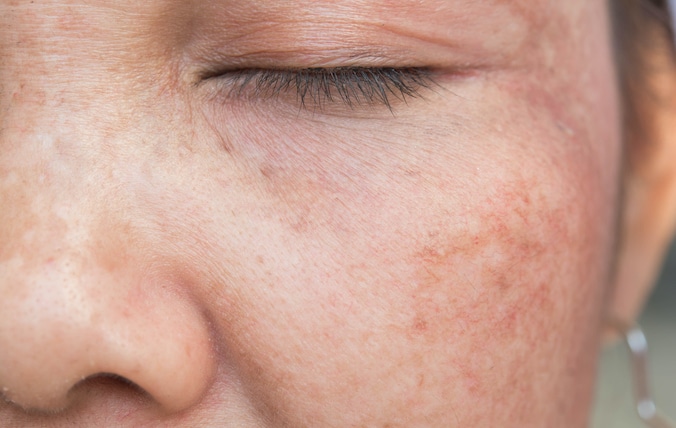We all know the importance of sunscreen and protecting our skin from the sun. But what about the damage that’s already been done? Can we repair and reverse sun damage to our skin? Did you know that even just a few minutes of sun exposure every day can cause long-term damage? Let’s explore what sun damage is, what causes it, and how we can repair it.
What is Sun Damage?
Sun damage is damage to the skin caused by exposure to ultraviolet (UV) radiation from the sun. UV radiation is made up of UVA rays, UVB rays, and UVC rays. UVA rays penetrate deep into the skin, breaking down collagen (the protein that keeps skin looking firm and young), and are the main cause of premature aging, such as wrinkles and age spots. UVB rays are the main cause of sunburn. UVC rays are the most dangerous but are mostly filtered out by the earth’s atmosphere.

Causes of Sun Damage
- Unprotected exposure to UV radiation is the main cause of sun damage.
- Certain medications, such as those used to treat psoriasis, lupus, and acne can make your skin more sensitive to sunlight.
- A weakened immune system can make your skin more susceptible to sun damage.
- A history of sunburns or tanning increases your risk for developing skin cancer.
- Exposure to artificial sources of UV radiation, such as tanning beds and lamps, can also cause sun damage.
How to Repair Sun Damage
- Use a broad-spectrum sunscreen with an SPF of 30 or higher every day to protect your skin from further damage. Apply it generously and reapply every 2 hours or after swimming or sweating.
- Exfoliating regularly. Exfoliating helps to remove dead skin cells from the surface of the skin, which can help improve the appearance of sun-damaged skin. Look for an exfoliating product that contains glycolic or lactic acid, two ingredients that are particularly effective at brightening and smoothing the skin.
- Using a retinoid cream or serum. Retinoids are derivatives of Vitamin A that speed up cell turnover and boost collagen production. This means they can help to reduce the appearance of wrinkles, fine lines, and age spots. Retinoids can be irritating to the skin, so it’s important to start with a lower concentration and increase as tolerated. You should also use a sunscreen during the day when using retinoids, as they make the skin more susceptible to sunburn. If over-the-counter options don’t seem to be working, talk to your doctor about prescription-strength retinoids or other treatments.
- Look for skincare products that contain vitamin C, glycolic acid, or niacinamide as these ingredients can help reduce the appearance of wrinkles and age spots.
- Undergo laser therapy or chemical peels. Laser therapy uses intense pulses of light to penetrating deep into the skin and trigger collagen production. Chemical peels use acids to remove dead skin cells from the surface of the skin and stimulate new cell growth. Both laser therapy and chemical peels can be effective at repairing sun damage, but they should be used with caution as they can also cause irritation and redness.

Anyone can develop sun damage since it only takes one unprotected exposure to UV radiation for it to occur. However, there are ways you can repair the damage that’s been done. By using sunscreen daily and looking for skincare products that contain certain ingredients, you can help improve your skin’s appearance.





